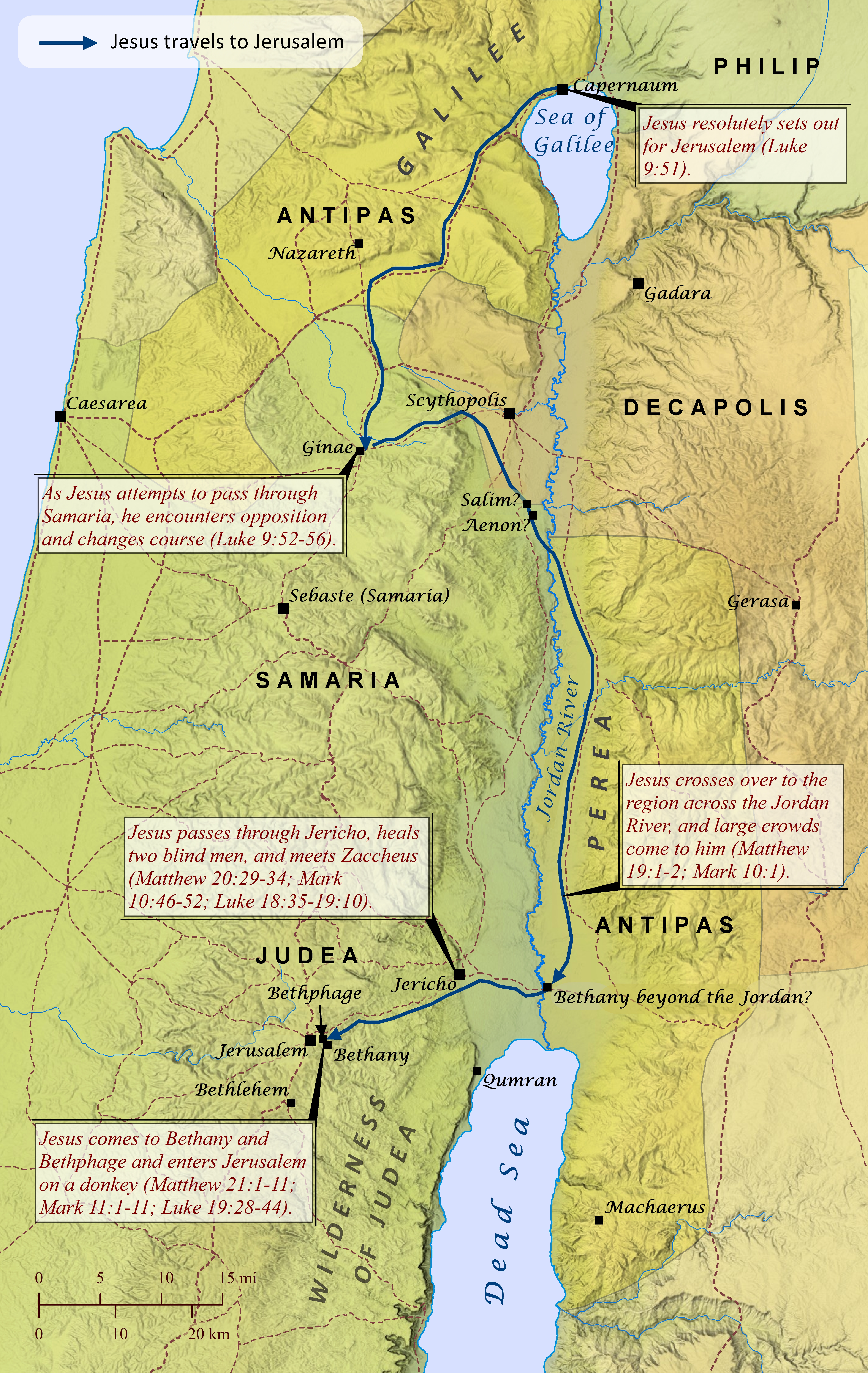Note: This view shows ‘verses’ which are not natural language units and hence sometimes only part of a sentence will be visible—click on any Bible version abbreviation down the left-hand side to see the verse in more of its context. Normally the OET discourages the reading of individual ‘verses’, but this view is only designed as a tool for doing comparisons of different translations—the older translations are further down the page (so you can read up from the bottom to trace the English translation history). The OET segments on this page are still very early looks into the unfinished texts of the Open English Translation of the Bible—please double-check these texts in advance before using in public.
AICNT And Jesus, stopping, called them and said, “What do you want me to do for you?”
OEB Then Jesus stopped and called them. ‘What do you want me to do for you?’ he said.
WEBBE Jesus stood still and called them, and asked, “What do you want me to do for you?”
WMBB Yeshua stood still and called them, and asked, “What do you want me to do for you?”
NET Jesus stopped, called them, and said, “What do you want me to do for you?”
LSV And having stood, Jesus called them and said, “What do you will [that] I may do to you?”
FBV Jesus stopped. He called them over, asking, “What do you want me to do for you?”
TCNT So Jesus stopped, called them over, and said, “What do you want me to do for you?”
T4T Jesus stopped and called them to come to him. Then he said to them, “What do you want me to do for you?”
LEB And Jesus stopped,[fn] called them, and said, “What do you want me to do for you?”
BBE And Jesus, stopping, sent for them, and said, What would you have me do to you?
Moff So Jesus stopped and called them. He said, "What do you want me to do for you?"
Wymth So Jesus stood still and called to them. "What shall I do for you?" He asked.
ASV And Jesus stood still, and called them, and said, What will ye that I should do unto you?
DRA And Jesus stood, and called them, and said: What will ye that I do to you?
YLT And having stood, Jesus called them, and said, 'What will ye [that] I may do to you?'
Drby And Jesus, having stopped, called them and said, What will ye that I shall do to you?
RV And Jesus stood still, and called them, and said, What will ye that I should do unto you?
(And Jesus stood still, and called them, and said, What will ye/you_all that I should do unto you? )
SLT And Jesus having stood, called them, and said, What will ye I shall do to you?
Wbstr And Jesus stood still, and called them, and said, What will ye that I shall do to you?
KJB-1769 And Jesus stood still, and called them, and said, What will ye that I shall do unto you?
(And Jesus stood still, and called them, and said, What will ye/you_all that I shall do unto you? )
KJB-1611 And Iesus stood still, and called them, and saide, What will yee that I shall doe vnto you?
(Modernised spelling is same as from KJB-1769 above)
Bshps And Iesus stode styll, & called them, and sayde: what wyll ye that I shall do vnto you?
(Modernised spelling is same as from KJB-1769 above, apart from capitalisation and punctuation)
Gnva Then Iesus stoode still, and called them, and said, What will ye that I should do to you?
(Then Yesus/Yeshua stood still, and called them, and said, What will ye/you_all that I should do to you? )
Cvdl And Iesus stode styll, and called them, and sayde: What wil ye, yt I shal do vnto you?
(And Yesus/Yeshua stood still, and called them, and said: What will ye/you_all, it I shall do unto you?)
TNT Then Iesus stode styll and called the and sayde: what will ye that I shulde do to you:
(Then Yesus/Yeshua stood still and called the and said: what will ye/you_all that I should do to you: )
Wycl And Jhesus stood, and clepide hem, and seide, What wolen ye, that Y do to you?
(And Yhesus stood, and called them, and said, What woollen ye/you_all, that I do to you?)
Luth JEsus aber stund stille und rief sie und sprach: Was wollt ihr, daß ich euch tun soll?
(Yesus but stood still(v) and shouted they/she/them and spoke: What wanted you(pl)/their/her, that I you do/put should?)
ClVg Et stetit Jesus, et vocavit eos, et ait: Quid vultis ut faciam vobis?
(And he_stood Yesus, and he_called them, and he_said: What wantsis as I_will_do to_you? )
UGNT καὶ στὰς, ὁ Ἰησοῦς ἐφώνησεν αὐτοὺς καὶ εἶπεν, τί θέλετε ποιήσω ὑμῖν?
(kai stas, ho Yaʸsous efōnaʸsen autous kai eipen, ti thelete poiaʸsō humin?)
SBL-GNT καὶ στὰς ὁ Ἰησοῦς ἐφώνησεν αὐτοὺς καὶ εἶπεν· Τί θέλετε ποιήσω ὑμῖν;
(kai stas ho Yaʸsous efōnaʸsen autous kai eipen; Ti thelete poiaʸsō humin;)
RP-GNT Καὶ στὰς ὁ Ἰησοῦς ἐφώνησεν αὐτούς, καὶ εἶπεν, Τί θέλετε ποιήσω ὑμῖν;
(Kai stas ho Yaʸsous efōnaʸsen autous, kai eipen, Ti thelete poiaʸsō humin;)
TC-GNT Καὶ στὰς ὁ Ἰησοῦς ἐφώνησεν αὐτούς, καὶ εἶπε, Τί θέλετε ποιήσω ὑμῖν;
(Kai stas ho Yaʸsous efōnaʸsen autous, kai eipe, Ti thelete poiaʸsō humin; )
Key for above GNTs: yellow:punctuation differs, orange:accents differ, red:words differ (from our SR-GNT base).
